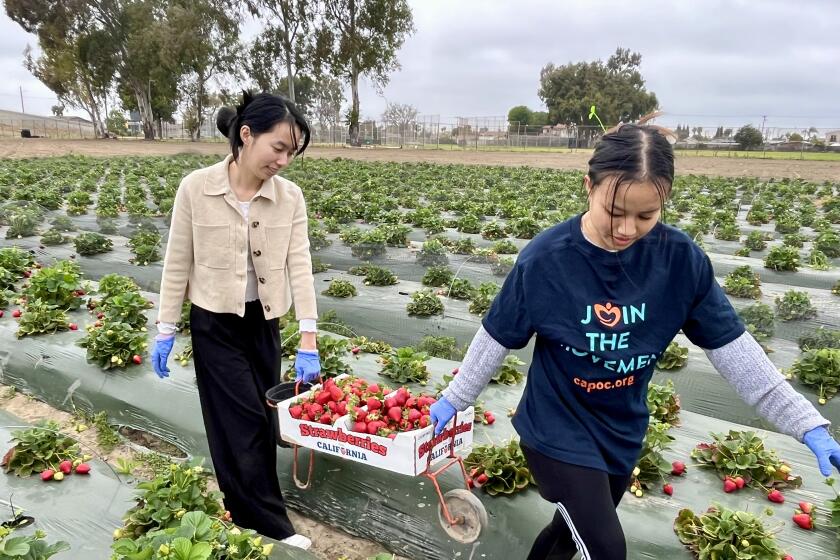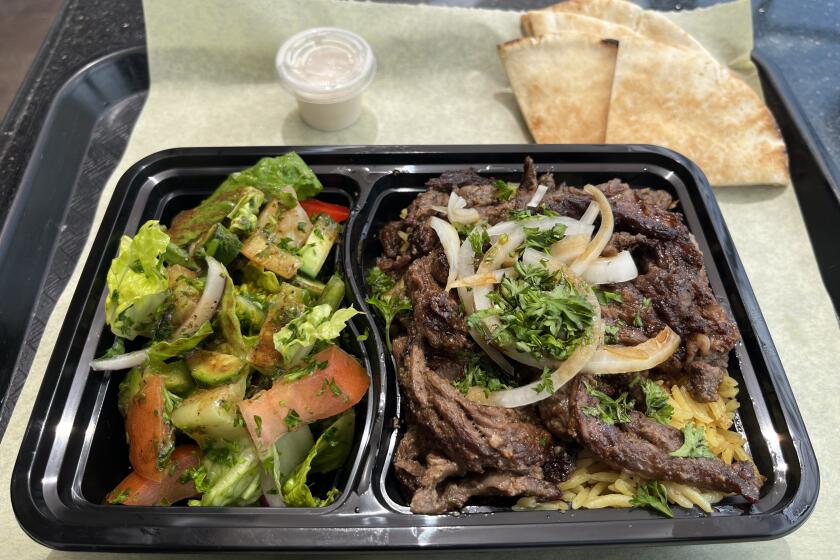Kofu Kai club keeps the tradition of bonsai alive
Bowers Museum in Santa Ana was able to fit dozens of trees in its John M. Lee Court earlier this month.
They were all tiny trees — bonsai trees to be exact.
For years, the Kofu Bonsai Kai club based in Orange County has made moves to keep the art of bonsai alive through educational programs and exhibiting trees at different events.
The organization’s president, Carol Upston, said there are plenty of myths to dispel about the modestly-sized trees.
“Someone may be fascinated with bonsai and we don’t want that person to not know what they can do with it,” Upston said. “One of the misconceptions is that bonsai trees are a dwarf species. But they’re really the same as any tree.”
Bonsai — a Japanese art form that involves miniaturized trees potted in containers — historically has its roots in the mountains of China, according to the club. The mountain trees were found to be stunted and twisted by bitter weather conditions, inspiring individuals to create trees with a similar natural beauty.
As visitors perused the bonsai trees in the Bowers’ exhibit that took place Aug. 30 through Sept. 3, Upston brought in one of her most recent projects she began tending to — a shrub-like tree that was removed from her neighbor’s yard during a plumbing project.
Other club members said they purchased trees from Home Depot for their bonsai projects.
Upston’s tree had round leaves with wires coiled around its branches.
“It’s all about refinement once you get to this point of the process — refining its silhouette so the leaves become smaller and the foliage more dense,” said Upston, who also led tours of the Bowers exhibit for visitors. “It’ll be about two years until it eventually matures.”
Kofu Bonsai Kai has come to Bowers for the past several years to exhibit trees from its club members’ private collections.
The show earlier this month featured 28 trees.
The plants boasted leaves of almost every size, from large and lush to bushy and needle-like.
Some trees had trunks that cascaded downward from the pot. Others had grown upright, looking like miniature jungles and forest trees.
One tree had its trunks grow long enough to surround the leaves. A few others had flowers among the greenery.
Many stood tall and twisted from their pots. Others were planted in containers capable of fitting into the palm of one’s hand.
“There are many different kinds of designs and shapes — it all depends on what you saw in it in the first place,” said the club’s former president Manuel Martinez. “That’s something that automatically occurs in the collection process.”
Martinez noted that maintaining the trees can involve a mix of trimming, pruning and wiring.
“It takes a bit of discipline, but that’s the beauty and the challenge of it,” Martinez said.
While the trees may be humble in size, stature does not make them strictly indoor plants, a common misunderstanding Upston said plenty of people have about bonsai.
Club members said another typical misconception is that all bonsai trees are “ancient,” when really it’s the illusion of age that is popular for the art form.
“The impression we’re trying to create is something that kind of makes you feel a sense of awe, something that has struggled in nature and has a great deal of dignity,” Upston said. “Those characteristics and qualities in trees like the texture of the bark and complexity of the branches tell our mind that something is old.”
The club participates in other events throughout the year such as the Golden State Bonsai Federation’s Convention held in different regions of California annually and The Huntington Library’s “Bonsai-a-Thon,” an event that includes exhibits and workshops.
During the rest of the year, monthly meetings at the Anaheim United Methodist Church, 1000 S. State College Blvd., Anaheim, are held for the club, which was established by bonsai master Harry Hirao and bonsai enthusiasts Larry Ragle and Marybel Balendonck.
“It’s a very relaxing art form and certainly a nice escape,” Martinez said. “It helped me slow down and kept my sanity and that’s the point — to sit down and concentrate.”
For more information about the organization, visit kofukai.org.
Twitter: @AlexandraChan10
All the latest on Orange County from Orange County.
Get our free TimesOC newsletter.
You may occasionally receive promotional content from the Daily Pilot.




